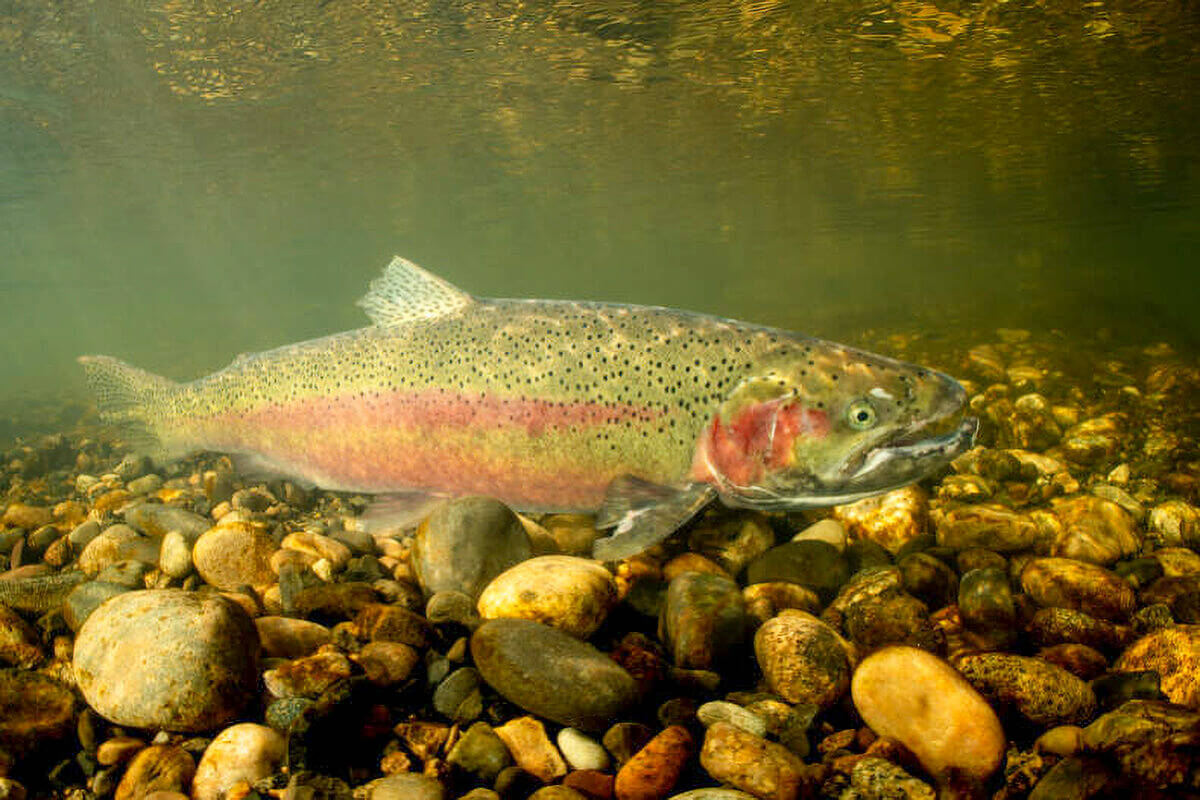The National Oceanic and Atmospheric Administration (NOAA), in conjunction with the National Marine Fisheries Service (NMFS), has proposed a 90-day finding on a petition to list Olympic Peninsula steelhead as threatened or endangered under the Endangered Species Act.
In a Feb. 10 filing on the Federal Register, the NMFS stated that the petition, which was submitted to the Secretary of Commerce in August 2022 by The Conservation Angler and Wild Fish Conservancy, presents “substantial scientific and commercial information indicating the listing may be warranted.”
NMFS concluded in its summary that they will conduct a status review of Olympic Peninsula steelhead to determine whether listing the species under the Endangered Species Act (ESA) in some format is necessary, and will be soliciting scientific and commercial information from any interested parties. According to the filing, all scientific and commercial information pertinent to the petitioned action must be received by NOAA or NMFS by April 11.
Possible outcomes of the petition are a negative finding on the 90-day review, which would end the process; or a positive finding which would spur the process to go through a public comment period and additional reviews, which could ultimately lead to a listing on the ESA. An endangered listing on the ESA would effectively shut down fishing for Olympic Peninsula steelhead.
According to NOAA Fisheries, steelhead trout are listed as threatened or endangered in numerous waterways, but not within the Olympic Peninsula Distinct Population Segment where the Olympic Peninsula steelhead are mostly found.
A study published in the North American Journal of Fisheries Management in November 2021 indicates that a listing on the ESA could be favored, as decades worth of documentation has shown that run sizes for Olympic Peninsula steelhead had come down from tens of thousands of fish in the historical period to mere thousands from 1980 through 2017. Notably, the Quillayute run declined by 38%, the Hoh saw a 69% decrease, the Queets decreased by 50%, and the lower Quinault River’s run had reduced by about 63% during the 37-year timeline. The study, however, did point to a 24% increase in Olympic Peninsula steelhead run size for the upper Quinault River.
The study listed the reasons for the decline in the population of Olympic Peninsula Steelhead amounted to “poor ocean conditions, angler and commercial harvest, and habitat degradation.”
This is not the first time that Olympic Peninsula steelhead populations have been investigated. In 1996, NMFS completed a comprehensive status review of coastal and inland steelhead populations in Washington, Oregon, Idaho and California. They concluded that while the Olympic Peninsula steelhead was not in danger of extinction or likely to become endangered in the foreseeable future, there were concerns about overall health.
Two potential ESA listings on which the Olympic Peninsula Steelhead species could find themselves are endangered or threatened. If Olympic Peninsula steelhead are listed as threatened rather than endangered, limited fishing could remain, and prohibitions would be determined on a case-by-case basis.
There can be exceptions to ESA rules. Native American tribes, for example, can petition the NMFS with a limited harvest plan and can use ESA-listed species for subsistence or ceremonial fishing. Such exceptions have been approved for protected salmon in Washington in the past.
People interested in submitting data or public comment relevant to the NOAA and NMFS status review of the Olympic Peninsula Steelhead can do so at www.regulations.gov.
Contact Reporter Allen Leister at 360-463-3572 or allen.leister@thedailyworld.com



